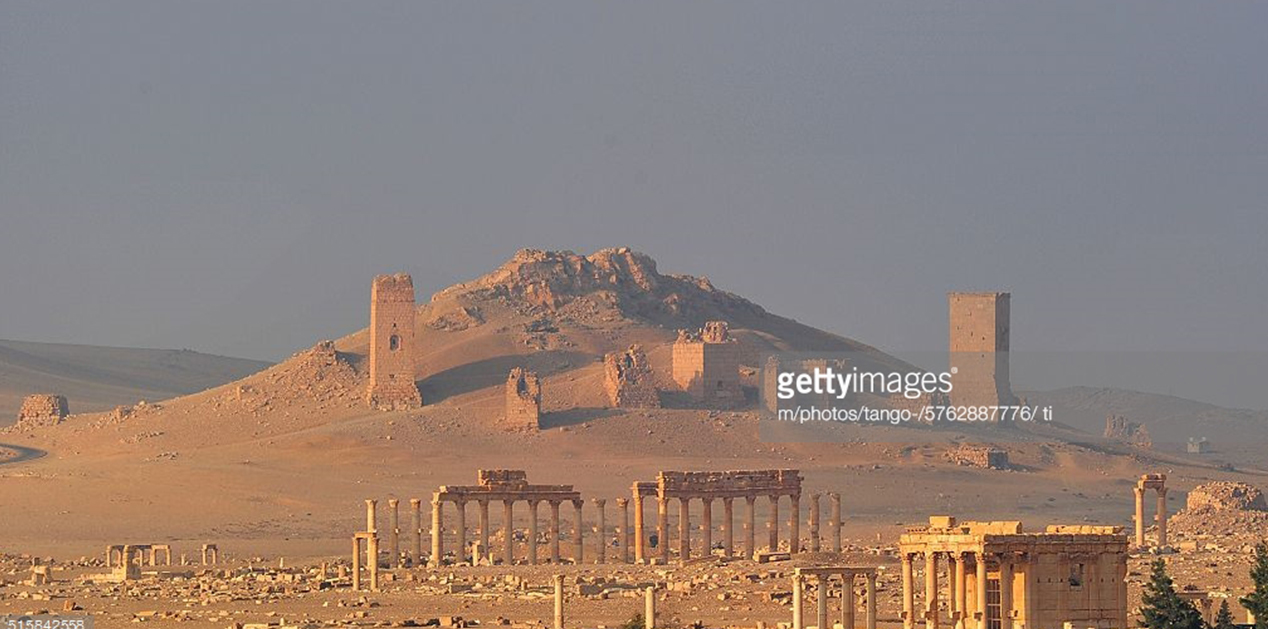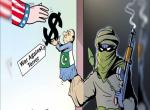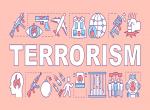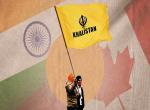For an outfit like the Islamic State or Daesh, which swears by its ambition to establish a global Caliphate, loss of territory is definitely a setback.
A US-based information agency estimated that between 1 January and 14 December 2015, Daesh’s territories in Iraq and Syria shrunk by 12,000 sq. Km to 78,000 sq. Km., a net loss of 14 percent.1 The commencement of the Russian air strikes from 30 September last year contributed to the cornering of Daesh in Syria. The Russian intervention enabled Assad’s forces and its allies to push out Daesh from Palmyra during late March this year. This happened after the city remained for almost ten months under the control of Daesh.
After President Vladimir Putin announced the drawdown of troops from Syria on 14 March, the Russian military campaigns shifted its targets towards Palmyra and the nearby areas resulting into the breakthrough. This reignited the debate over Russia’s potential return to West Asia as a major player. While Russia’s military prowess has been exhibited, it is yet to be seen how far Moscow’s political clout will help in resolving the Syrian crisis. The latter aspect still looks to be shaky as other players, including the US, are not on the same page over the issue of political transition. Heralding the seizure of Palmyra, an expert made a cautious observation:
The seizure of Palmyra curtails the ability of ISIS to project force into Western Syria from its safe haven along the Euphrates River Valley and provides a much-needed buffer for several critical regime-held oil and natural gas fields that provide electricity to Western Syria. The regime and its allies will likely leverage Palmyra and its military facilities as an optimal forward position for follow-on operations against ISIS in Ar-Raqqa and Deir ez-Zour Cities, complicating the position of the U.S.-led coalition in the region.2
Palmyra is likely to be used as a launch pad for the expansion of operations against Daesh in the above provinces.
Ever since the coalition’s military campaign led by the US since September 2014 began to keep a check on the forward movements of Daesh militias, particularly in Iraq, the militant outfit has started losing its territory. Despite several gaps in the overall anti-Daesh strategy, the counter-offensive measures have paid off well in Syria, too.
During 2015 and early 2016, Daesh started to lose its grip in some of the areas it controlled in both these countries. Before its decisive victory which led to the fall of Ramadi in May 2015, Iraqi forces, in coordination with tribal forces and locals, recaptured the strategic city of Tikrit in April. With this triumph, the efforts to free Mosul from the clutch of the group have started but have not succeeded so far.
In November, coordination between Kurdish Peshmerga fighters and Yazidis resulted in regaining full control of Sinjar in Iraq, and parts of a road which served as a link with Syria.3 This restricted the movements of the Daesh fighters between Iraq and Syria, curbed smuggling of weapons, and caused financial strain on the otfit. In a quick succession, a US-led coalition campaign liberated Ramadi, the capital city of Anbar province in late December 2015. Since then, the outfit has not made any significant progress in their attempts to occupy more territories though it continues to carry out attacks.
Similarly, Daesh’s territories inside Syria began to shrink although its so-called headquarters at Raqqa is still under its control. From early 2015, Syrian Kurds, who are fighting against the Daesh militias, made concerted efforts to take back the border down of Tal Abyad in Syria, which is close to the Turkish border. This was a strategic asset as Daesh fighters used it to cross into Turkey, and it also served as a supply conduit for Raqqa. The Kurdish Popular Protection Units (YPG), backed by the US air strikes, assisted in the liberation campaign. Along with the loss of territories, the financial system has also been severely affected in both the countries, and this is increasingly causing rifts amongst the fighters. Amidst these developments, Turkey remains extremely concerned about the rising capabilities of the Syrian Kurds along its borders as they have been demanding a separate entity for themselves. As observed by an American defence expert,
…situation in Syria is not dissimilar to what is occurring in Iraq: Kurdish territorial successes in expelling ISIS safe havens are emboldening Kurdish nationalist groups and stirring ethnic tensions…But their successes will…stir deep concerns across the border in Turkey.4
The divergence in the interests is the reason as to why external players, including Turkey and the United States, do not see eye-to-eye on combating Daesh. This mainly pertains to the Syrian crisis where a few countries do not want to see the ouster of Bashar al-Assad, while others support the establishment of a new government without him.
As Daesh upholds the centrality of establishing an Islamic state, the continuous shrinking of territories under its direct governance is a serious drawback. It was the territorial expansion since mid-June 2014 which made Daesh unique from other contemporary terror organisations. Even its parent-organisation al-Qaeda could not keep defined territories (despite its enormous network) of such magnitude since its inception in the late 1980s. The idea of having a Caliphate with administrative units, currency, social services, judicial, educational and banking systems has attracted like-minded terror outfits, supporters and sympathisers from different corners of the world. This is one of the reasons why many extremist organisations pledged allegiance to Daesh and several foreign recruits travelled to Syria and Iraq. Now, when the territorial control starts crumbling, the ambition of raising such an entity diminishes.
Challenges Ahead:
The weakening of Daesh in Syria and Iraq should not lead to any sort of complacency. There are serious challenges which the countries involved in the fight against this outfit have to face continuously in the coming days. Despite the gradual retreats from these two countries, Daesh still manages to keep certain areas intact. The leaderships continue to make strategic decisions and give orders vis-à-vis operations for the region and beyond. Moreover, the physical and logistical capabilities to conduct attacks have not been fully contained or destroyed. Another worrisome factor is the potential chemical or biological attacks. After an alleged used of such lethal weapons against the Kurdish forces in August last year,5 the European Parliament and US intelligence warned of the possibility of such attacks, particularly in Europe. A serious debate on this issue was kick-started after the 13-November Paris attack.6 The profiles of the foreign recruits, mostly with educational and professional experiences on technical subjects such as physics, chemistry and computer science was another reason to be concerned in this regard. As a result, destroying their military capabilities, including the know-how to make bombs, needs to be one of the topmost priorities while evicting them from the epicentres—Iraq and Syria. For this, their source of funding, which is helping in sustaining the organisational structure of the group, also needs to be cut.
As the outfit is steadily losing ground, it has begun to export its terror activities abroad. There have been several attacks either directly linked to Daesh or inspired by it. Some of the major incidents took place between late 2014 and March 2016 in France, Yemen, Tunisia, Turkey, Belgium, Kuwait, Saudi Arabia, Lebanon, Bangladesh, Afghanistan, Australia, Libya, Indonesia and Egypt.7
The carnage, particularly in Paris and Brussels, are clear manifestations of Daesh’s rising ability to strike overseas targets with meticulous planning. They also signified the level of proficiency. Further attacks cannot be ruled out as there are already vast Islamist networks with access to weapons systems, financial assistance and returnees with battlefield experiences. This is also applicable to the South and Southeast Asian context from where fighters have moved towards West Asia, and disaffected groups and local terror outfits are looking for the right moment to strike. They are, thus, going to be a major challenge to the counterterrorism measures of countries which are under Daesh’s hit list. Furthermore, on the expansion front, it is increasingly looking towards Libya as a fallback option although it is yet to capture more territories. Notwithstanding geographical and financial limitations, further penetration into this country, however, will enable Daesh to use it as a springboard for the European and regional operations.
Another challenge is the issue of administering the territories recaptured from the outfit. Owing to the highly sectarian nature of the conflict and the involvement of various factions with different objectives, there should be clear-cut policies of how to integrate and govern. It will be undesirable to witness an emergence of new fighting between different groups even when Daesh is not completely uprooted.
Finally, merely liberating territories alone will not break the backbone of Daesh but fighting its extremely pernicious ideology should be helpful in the long run. But the reality is that there are still no effective counter-narratives or de-radicalisation programmes that could prevent impressionable youths from blowing themselves up in the name of holy war. The present-day radicalisation process, particularly in Europe, is a suitable example. In all likelihood, the outfit will become more transnational in its campaigns. Tackling these eminent problems is going to be a major challenge for a foreseeable future. Tellingly, all said and done, the battlefield setbacks will leave an impact on Daesh’s activities inside Syria and Iraq though it will continue to defend and protect its areas. The need of the hour is to give undivided attention towards uprooting this outfit through military measures and ideologically. Both are going to be arduous tasks.
Endnotes
- “Islamic State's Caliphate Shrinks by 14 Percent in 2015”, IHS, 21 December 2015.
- Chris Kozak, “Russian-Syrian-Iranian Coalition Seizes ISIS-held Palmyra”,Institute for the Study of War, 27 March 2016.
- Endnotes: Sergio Pecanha and Derek Watkins, “ISIS’ Territory Shrank in Syria and Iraq This Year”, The New York Times, 22 December 2015.
- Nour Malas et al., “U.S. Allies in Syria Cut Islamic State Supply Line”, The Wall Street Journal, 16 June.
- “Tests show Isis used mustard gas in Iraq, says diplomat at chemical watchdog”, The Guardian, 16 February 2016.
- For further discussions, see “ISIL/Da'esh and 'non-conventional' weapons of terror”, Briefing, European Parliament, December 2015. Also, Naomi Bar-Yaacov, “What if Isis launches a chemical attack in Europe?”, The Guardian, 27 November 2015.
- For detailed information, see Karen Yourish et al., “Where ISIS Has Directed and Inspired Attacks Around the World”, The New York Times, 22 March 2016.
Published Date: 13th April 2016, Image Source: http://www.gettyimages.in
(Disclaimer: The views and opinions expressed in this article are those of the author and do not necessarily reflect the official policy or position of the Vivekananda International Foundation)











Post new comment